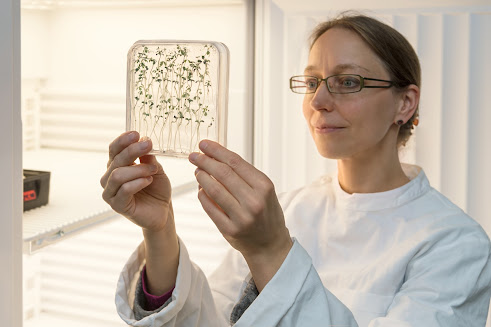 |
| A magnified view reveals nanoscale mesocrystals (inset) starting to assemble and form an ordered supracrystal structure, seen in green. Credit: Inna Soroka |
A research team from KTH Royal Institute of Technology and Max Planck Institute of Colloids and Interfaces report to have found the key to controlled fabrication of cerium oxide mesocrystals. The research is a step forward in tuning nanomaterials that can serve a wide range of uses —including solar cells, fuel catalysts and even medicine.
Mesocrystals are nanoparticles with identical size, shape and crystallographic orientation, and they can be used as building blocks to create artificial nanostructures with customized optical, magnetic or electronic properties.
In nature, these three-dimensional structures are found in coral, sea urchins and calcite desert rose. Artificially-produced cerium oxide (CeO2) mesocrystals—or nanoceria—are well-known as catalysts, with antioxidant properties that could be useful in pharmaceutical development.










.jpg)



.jpg)

